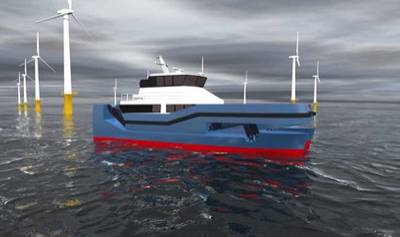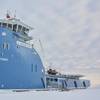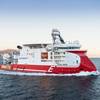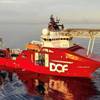Nauti-Craft, ST Engineering Working on Offshore Wind CTV
Australia's Nauti-Craft and Singapore's ST Engineering Marine Ltd, the marine arm of Singapore headquarters ST Engineering, have signed a letter of intent to explore options of collaborating on crew transfer vessels (CTV) for the offshore wind industry.
The project would look at ways to incorporate the Nauti-Craft patented marine suspension system which separates the vessel's hull from the deck and superstructure via a 'passive reactive' interlinked hydraulic system which provides increased levels of ride comfort, control, and stability.
"With growing opportunities in Europe, Asia and the USA for the global offshore wind industry, the two companies are joining hands to develop vessels for these regions. The LOI sets out the intentions of the parties to further develop the business opportunity of, in the first instance, developing, building and supplying Nauti-Craft equipped Crew Transfer Vessels (CTV) to the offshore wind industry under license to
Nauti-Craft," Nauti-Craft said.
ST Engineering has completed a preliminary design of a 20m CTV incorporating Nauti-Craft technology and this will be the initial focus of the business opportunity being explored.
Should the further detailed study of the business opportunity indicate that it will be mutually beneficial, Nauti-Craft and ST Engineering will move to conclude a formal commercial agreement under which rights to use Nauti-Craft’s patented technology will be secured by ST Engineering.
According to the companies, Crew Transfer Vessels incorporating Nauti-Craft’s marine suspension system could greatly improve the operating window of a CTV in-service installing and maintaining offshore wind turbines.
In some cases, it has been said, up to a 70% increase in available days can be achieved by having a similar-sized more capable vessel operating in high sea conditions transferring personnel to the wind turbine.
"Alternatively, a smaller Nauti-Craft CTV can undertake the task of larger vessels, therefore, reducing both capital and operating expenses. In addition to providing increased access to the wind turbine in harsh weather, the transfer of personnel is much safer due to the vessel having
a more stable deck both during transit to the turbine and during transfer of personnel onto the turbine," Nauti-Craft said.
"While the initial focus of the cooperation is offshore wind vessels, the long term relationship could extend to multiple vessel applications in the commercial and defense sectors," the companies said.











